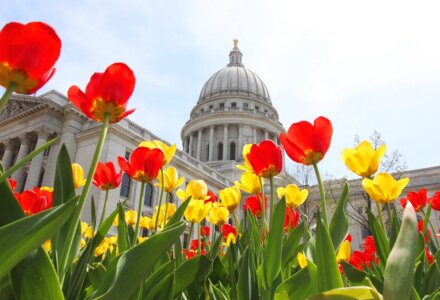Madison Garden Spring Preparation: Timing is Everything
As winter’s grip loosens on Madison, gardeners eagerly await the first signs of spring. Successful gardening in our Zone 5a climate requires strategic timing and preparation. Let’s explore how to get your garden ready for the growing season while working with Wisconsin’s unique conditions.
Understanding Madison’s Growing Season
Before digging in, it’s crucial to understand our local climate. Madison typically experiences last frost dates between May 1-10, with occasional late freezes catching eager gardeners by surprise. Mark your calendar and resist the temptation to plant tender vegetables and annuals too early.
Soil Assessment and Preparation
Once the ground has thawed and isn’t soggy (the classic “soil clump test” – if it sticks together in a ball, it’s still too wet to work), start with these tasks:
- Remove winter debris, fallen branches, and dead plant material
- Test your soil pH and nutrient levels (UW-Extension offers affordable testing)
- Amend soil with compost to improve structure and fertility
- Consider adding a light layer of leaf mulch to suppress early weeds
Madison’s soil often tends toward clay, especially in newer developments. Adding organic matter improves drainage and creates a healthier growing environment.
Planning Your Garden Layout
Take time to sketch your garden plans before planting. Consider:
- Crop rotation for vegetable beds
- Sunlight patterns in your yard
- Water access points
- Companion planting opportunities
Madison’s unpredictable spring weather means designing flexibility into your garden. Create microclimates using raised beds, which warm faster and drain better than ground-level planting.
Embracing Native Wisconsin Plants
Native plants thrive in our local conditions with minimal intervention. Consider incorporating:
- Prairie blazing star
- Purple coneflower
- Wild bergamot
- New England aster
These natives support local pollinators and add authentic Wisconsin character to your landscape.
Starting Seeds Indoors
Beat the short growing season by starting seeds indoors:
- Cool-season vegetables (peas, spinach, kale): 6-8 weeks before last frost
- Warm-season crops (tomatoes, peppers): 6-8 weeks before transplanting
- Flowers: timing varies by variety
A south-facing window provides good light, but supplemental grow lights improve success rates significantly.
Early Season Planting
Some crops thrive in Madison’s cool spring conditions:
- Peas and radishes can be direct-sown in April
- Lettuce, spinach, and other greens tolerate light frost
- Cold frames extend your growing season by several weeks
Monitor forecasts closely and have frost protection ready for unexpected cold snaps.
Tool Maintenance and Organization
Prepare your garden tools before the busy season:
- Sharpen pruners, shovels, and hoes
- Oil wooden handles to prevent splinters
- Organize supplies for easy access
- Check irrigation systems and repair as needed
Dealing with Wisconsin Wildlife
Madison gardens face challenges from deer, rabbits, and other wildlife. Install protective measures early:
- Refresh deer fencing
- Check for entry points in existing barriers
- Consider companion planting with strong-scented herbs to deter some pests
Creating a Seasonal Schedule
Break down garden tasks into manageable steps:
- Early spring: cleanup, soil preparation, cool-season plantings
- Mid-spring: hardening off seedlings, preparing trellises
- Late spring: transplanting warm-season crops after frost danger passes
A realistic timeline prevents overwhelming work and missed planting windows.
Connecting with Local Resources
Madison offers abundant gardening resources:
- Olbrich Botanical Gardens’ plant sales
- UW-Extension Master Gardener programs
- Community garden networks
- Local garden centers with Wisconsin-specific knowledge
These connections provide region-specific advice that general gardening resources might miss.
Madison garden spring preparation balances patience with strategic early action. Our unique climate challenges us to work with nature’s rhythms rather than against them. By understanding local growing conditions and planning accordingly, you’ll set the foundation for a productive and beautiful garden season in Wisconsin’s capital city.
Looking for a home in the area? Check out my featured listings!

